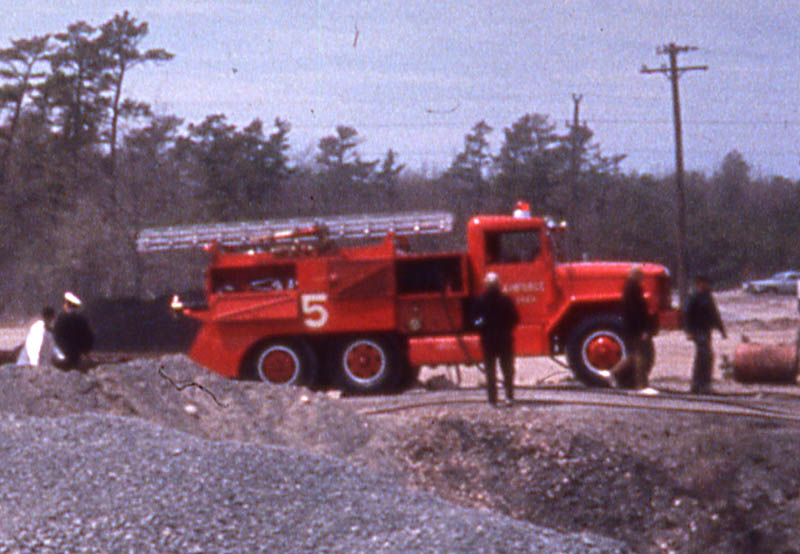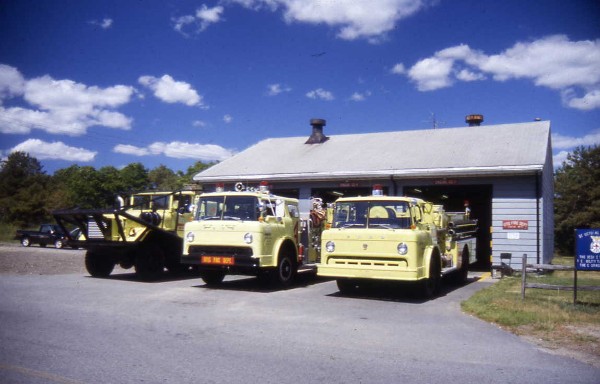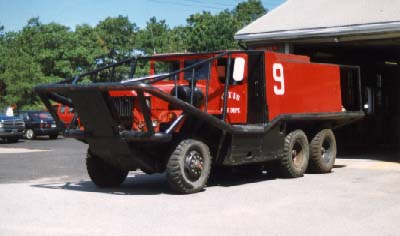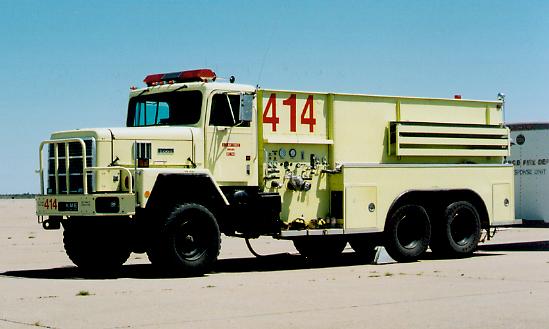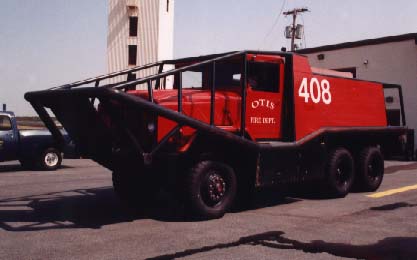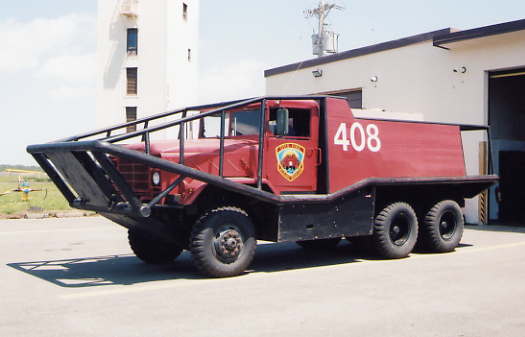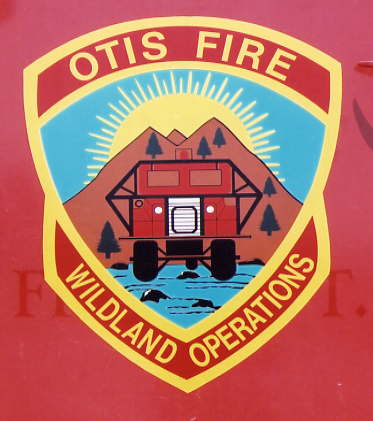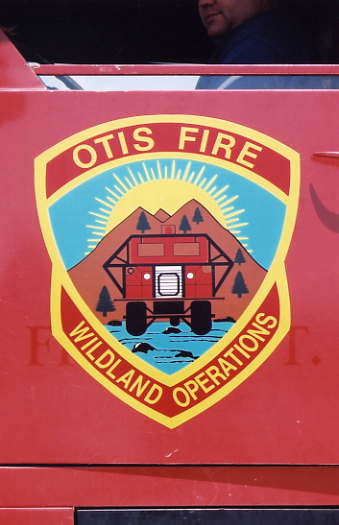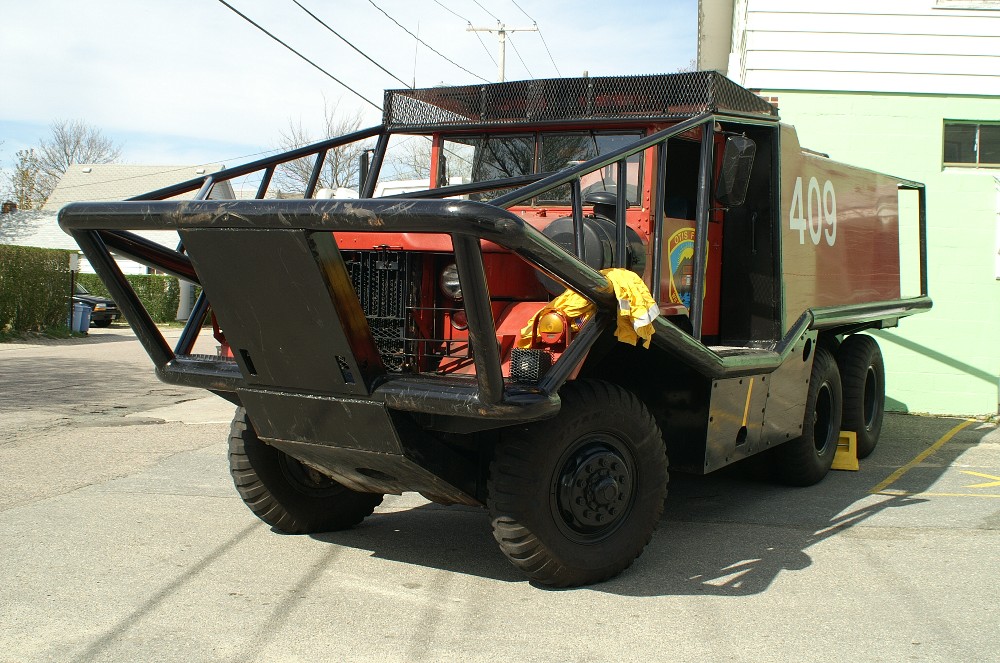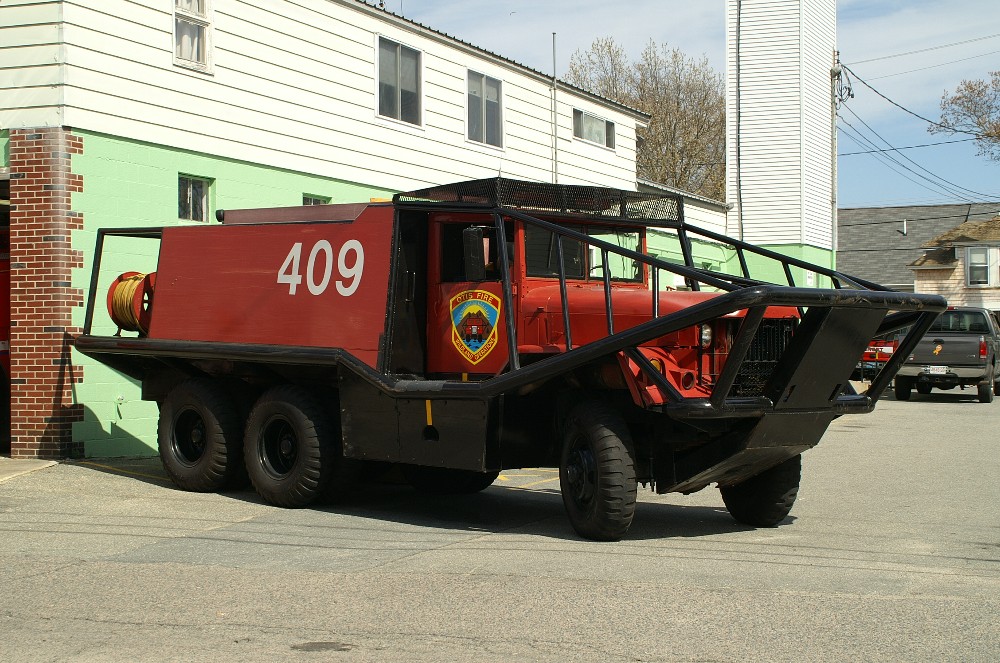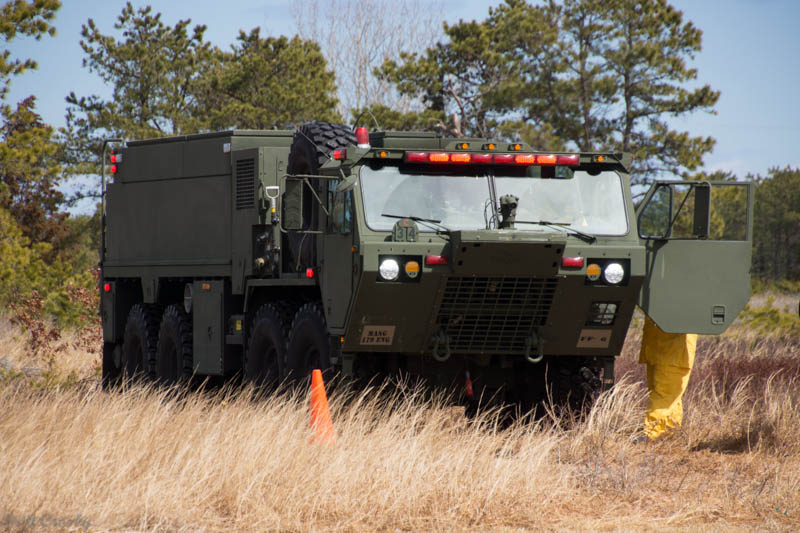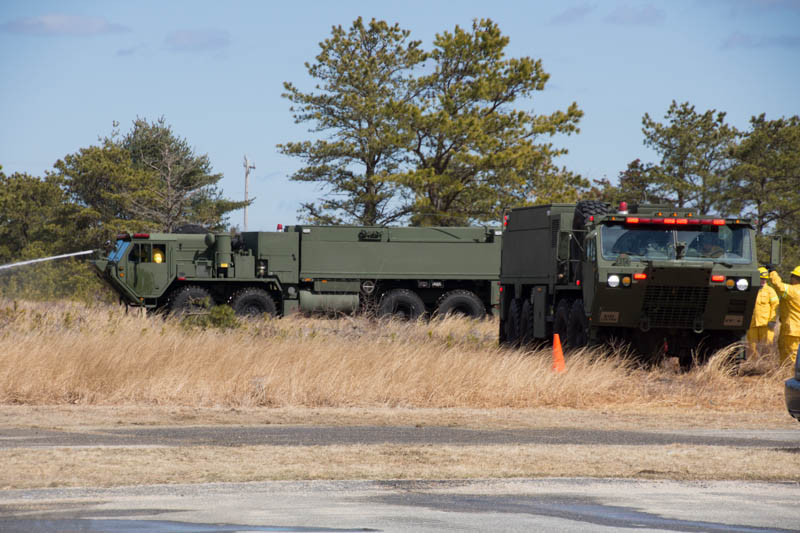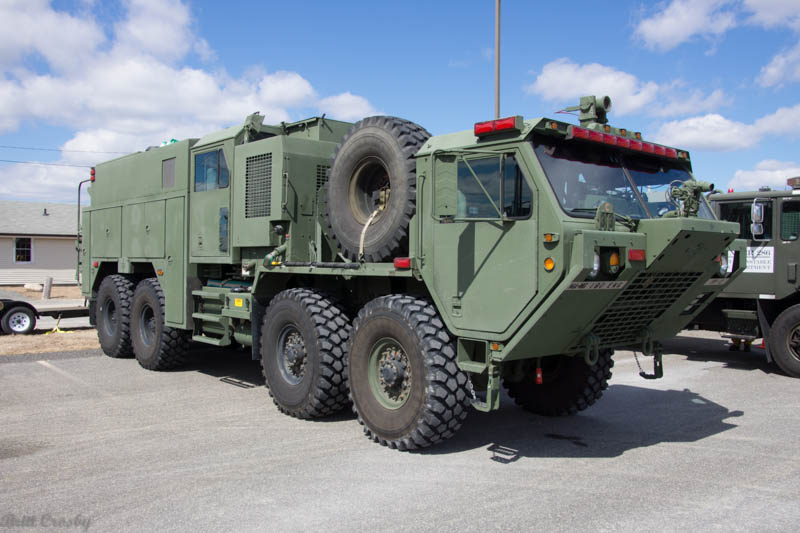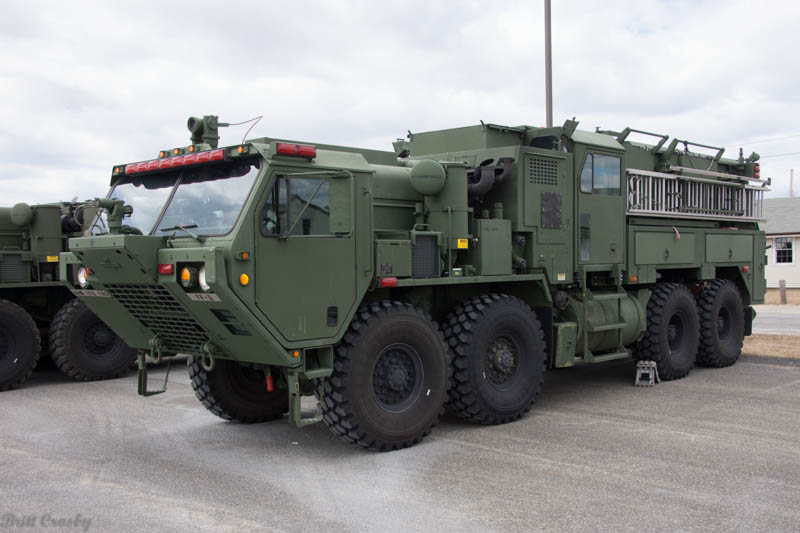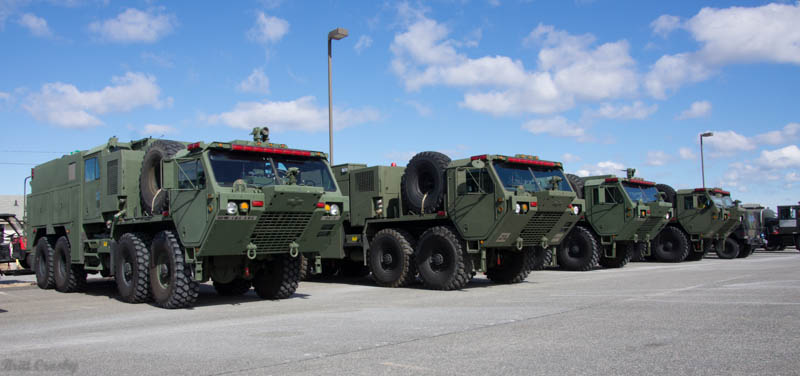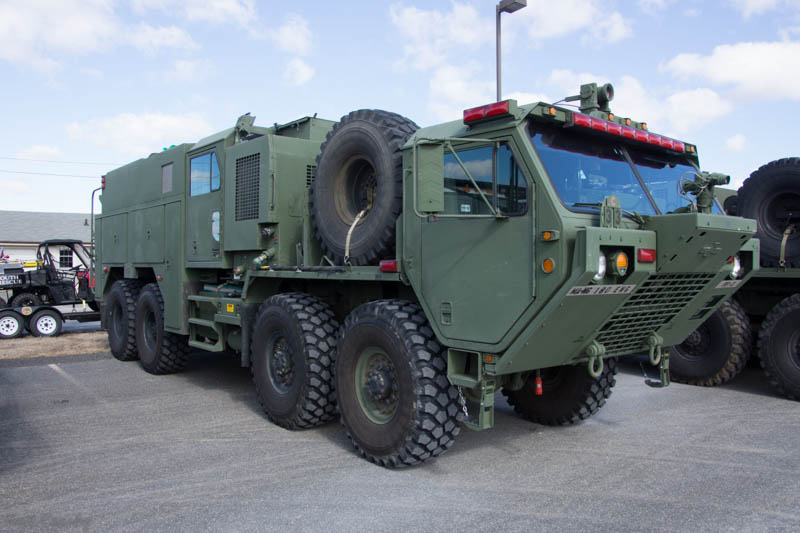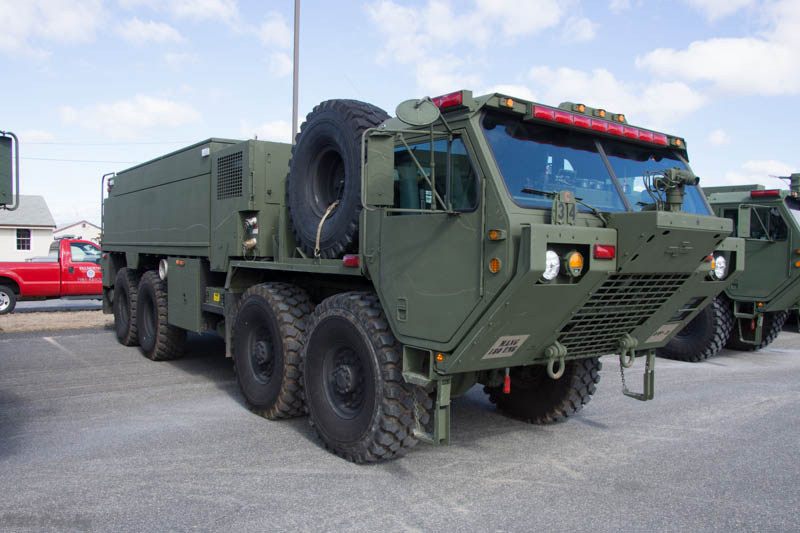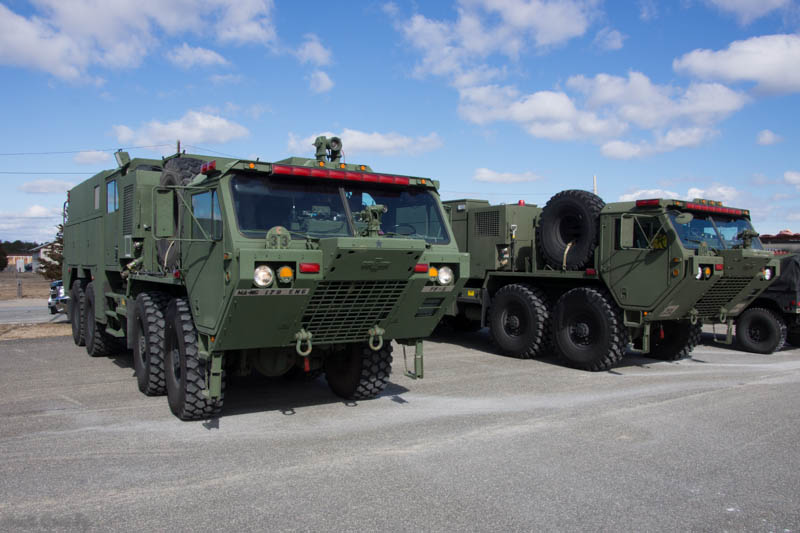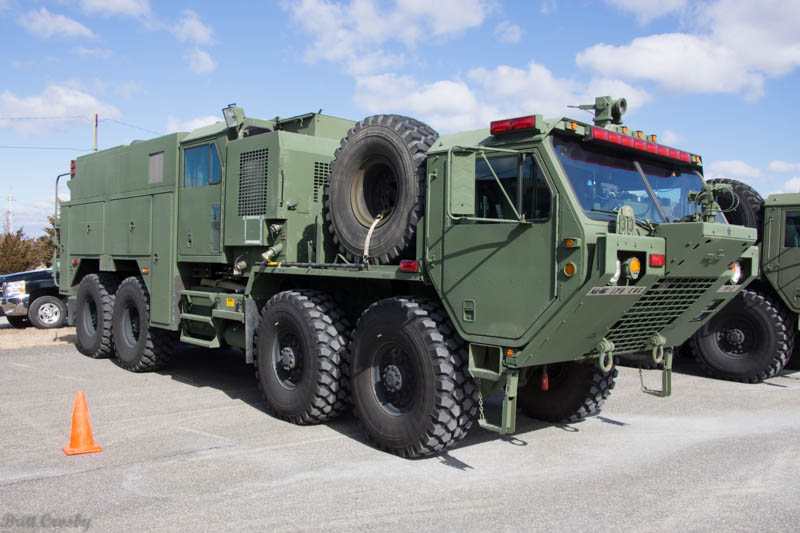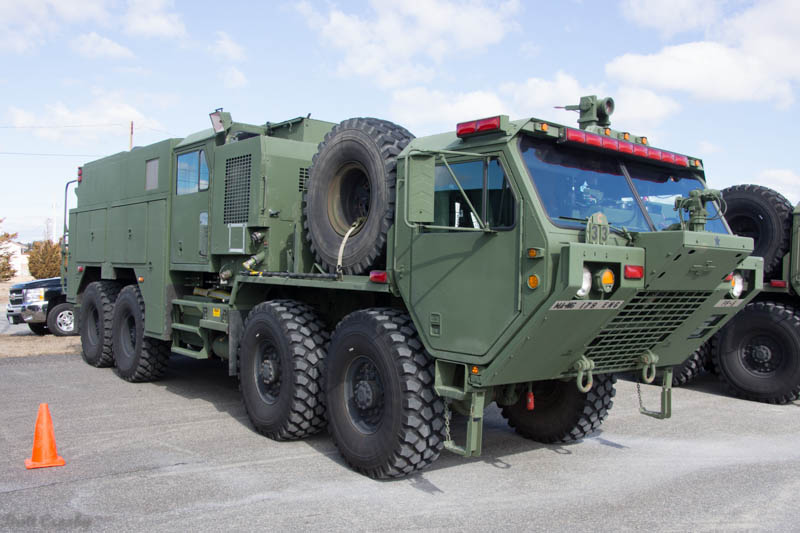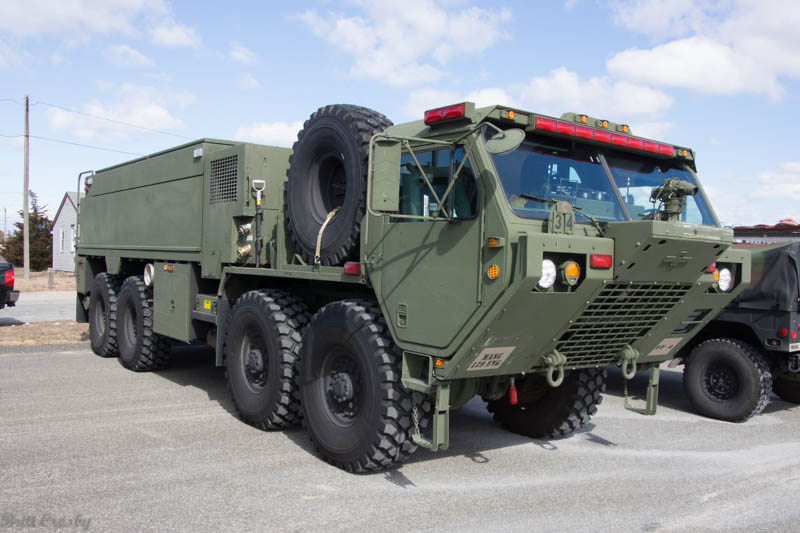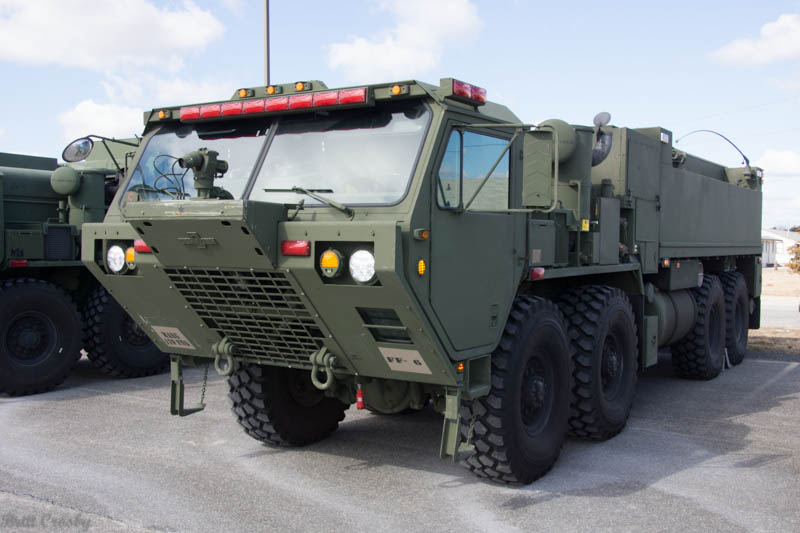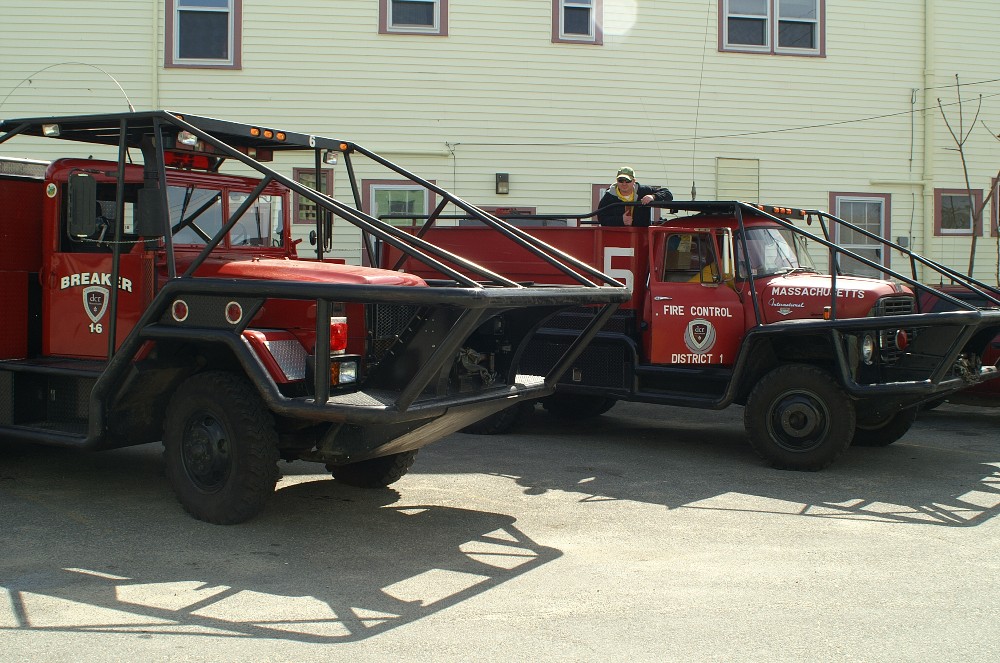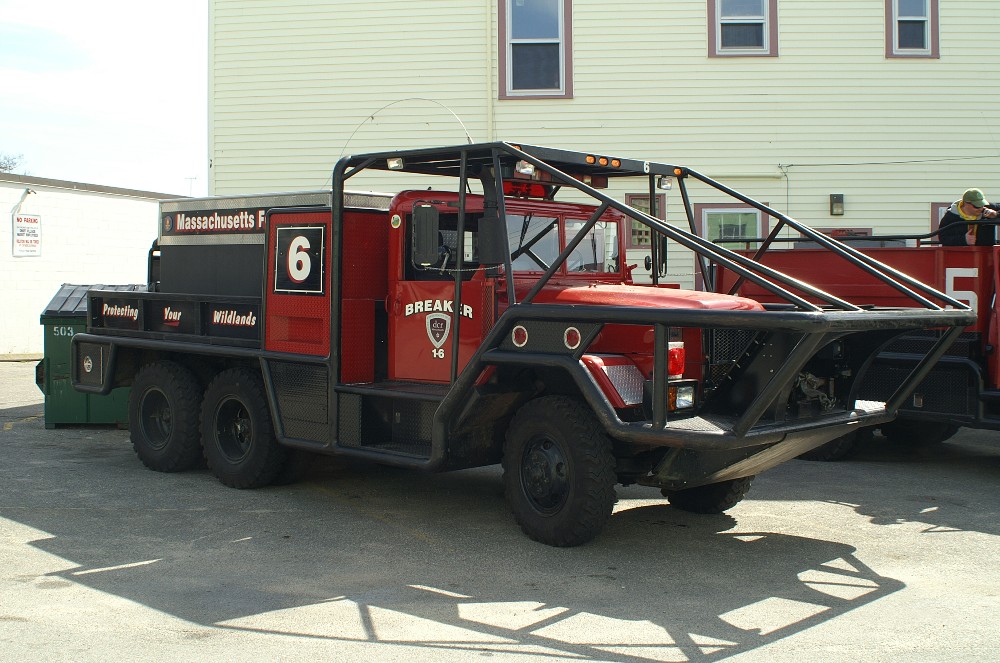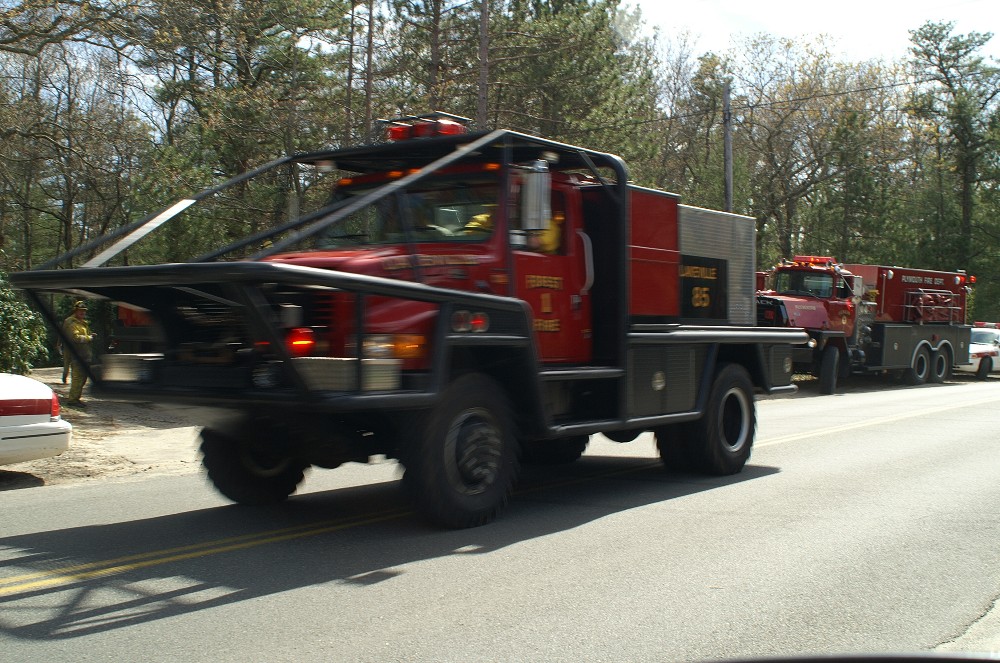|
CapeCodFD.com |
|||||||
|
|
|||||||
|
CAPE
COD BRUSH BREAKERS |
|||||||
|
Otis |
|||||||
|
|
|||||||
|
MAIN INDEX
PAGE |
|||||||
|
|||||||
|
|||||||
|
|||||||
|
|||||||
| FROM THE HISTORY OF THE
OTIS FIRE DEPARTMENT In 1908 the Massachusetts National Guard began summer training in the woods of the upper Cape. In April 1935 the governor signed a bill establishing the Massachusetts Military Reservation in the upper Cape Cod. Later in 1935, the War Department approved acquisition of 200,000 acres for the use of training the Army's 26th Yankee Division National Guard within the towns of Bourne, Sandwich, Falmouth, and Mashpee. As construction commenced, a small fire brigade was formed. It is believed that that original department operated a home made 450 gallon brush breaker. Soon after the camp was established an unpaved airfield was constructed. In July 1938 the Massachusetts Military Reservation was dedicated Cape Edwards for Major General Clarence Edwards, former commander of the Yankee Division. The airfield was named Otis Field for 1st Lt Frank "Jesse" Otis, a Boston native killed in a plane crash in 1937. With the start of WWII, the federal government leased the base in 1940. The base expanded rapidly with over 1,500 structures being built within months and 3 new paved 7,000 foot runways. During construction, fire protection was provided by Walsh Construction. It consisted of 3 apparatus, a retrofitted 4 speed 750 gallon "Liberty Truck" tanker built by the Army Quartermasters, and 2 leased pumpers. The department consisted of 51 civilian firefighters, employed by Walsh, under the command of Fire Chief Clarence Gibbs, which operated for 125 days from Sept 1940 to January 1941 when construction was completed. At that time, fire protection was turned over to the S.S. Army. Elmer H James was selected as Fire Chief, with Charles F Dooling and Clarence Gibbs as Assistant Chiefs. These 3 civilian supervisors hired 6 experienced civilian hosemen/firefighters to serve as instructors for 71 soldiers assigned to the base fire department. The Liberty Truck tanker and old brush breaker were retained, while 8 pumpers, and a chief's station wagon were added to the new fire department which operated from 5 fire stations. Fire Station 1 was located on the northwest corner of the
cantonment area (Connery Ave rotary). It served as the headquarters
and contained the alarm room. The U.S. Air Force commissioned Otis Air Force Base in 1949. The crash station was operated by USAF with an addition providing 6 apparatus bays. The Air Force Fire Department utilized a combination of civilian and active duty personnel. From 1949 to 1955 there were 2 fire departments on the base, the Otis Air Force Base Department operating from the Crash Station with a 530A pumper and a tanker and Station 3 with a structural engine. The all civilian Camp Edwards Fire Department operated Station 1 with 2 pumpers and a tanker & Station 4 with a pumper and brush breaker. Station 2 was used as a fire extinguisher shop. In 1955 the Army's Camp Edwards Fire Department was merged into the Otis Air Force Base Fire Department forming one department with a combination of Army, Air Force, and civilian personnel. Fire Chief George Cahoon became the first chief of the consolidated department. Station 3 was closed and eventually torn down. The 2 brush breakers operated by the Camp Edwards FD were inherited by the Otis AFB FD. In 1960 the Air Force built a new combination Crash and Structural Fire Station across the runways on the east side of the flightline. It had 3 bays for structural apparatus and 5 bays for crash equipment. The new station contained a new alarm room, so the old alarm room at Station 1 was closed. Station 1 remained open with a engine and tanker. Station 2 was closed. The former crash station was taken over by fire prevention and extinguishers. Station 4 remained with 2 pumpers and a brush breaker. From 1960 to 1963, Otis Air Force Base was frequently used by Air Force One as President John F Kennedy visited Cape Cod and the "Kennedy Compound" in Hyannisport. The Otis AFB FD would send a 530 series pumper and O-10 crash truck to Hyannisport to be on standby for Marine One helicopter movements. The apparatus would stay in the Hyannis Fire Station at night for the duration of the visits. In 1960, a high security Bomarc Missile site was built on the base and it had its own fire department operating a 530 B series pumper used primarily for protecting during fueling and defueling of the missiles. The Bomarc site and its fire department was operational until 1972. For a time, Otis was the largest Air Defense Command and Strategic Air Command base in the world. Station 1 closed during the 1960s, but was used for a period of time by ANG and reserve firefighting units during summer training. In 1970 the USCG Air Station Cape Cod was established and they operated a twin agent fire truck was operated by the air station. The Otis AFB was deactivated at the end of 1973 and over the following years fire protection was provided by a combination of personnel under Fire Chief Calvin Hitchcock. In 1980 the base was renamed Otis Air National Guard Base. An additional bay was added onto the crash station for a tanker-runway foamer in the early 1980s. The crash station eventually became known as Station 1 and the East Hospital Road Station became Station 2. In 1998 the department adopted the use of County Radio numbers on the apparatus (ie Breaker 9 became Breaker 409). In 2007 a new combination structural and crash fire headquarters station was opened, closing the former crash station and the old station 2. The department operates from one station for the first time in over 60 years. On Sept 28, 2008 the Otis Fire Department was disbanded and the Massachusetts Military Reservation Fire Department was established.
This is one of Camp Edwards early brush breakers. It was probably assigned to Station 1. This appears to be either the same truck or a prototype for the 1944 Chevy Brush Breaker operated by the Bourne Fire Department for many years as Breaker 7.
The 1944 Diamond T 1000 gallon brush breaker was operated by Otis Fire Department.
1960s Breaker 14 Otis Fire Department
May 1, 1965 Route 6
1960s Otis Fire Department Breaker 19
1960s Breaker 19 appears to have been renumbered Breaker 8
Otis Fire Department Tanker 13 1960s
Otis Fire Department Tanker 13 1980s 5000 gallons and 1000 gpm.
1968 Kaiser mil / Ted Young brush breaker 1500 gallons during 1980s
1972 AM General mil / Ted Young 1500 gallon brush breaker 9
1987 International / KME P-18 Tanker 2000 gallons. Originally
T-18.
1983 (1995)AM General mil 950 gallon brush breaker
1976 (1995) Gibson Mil 950 gallon brush breaker
|
|||||||
|
CapeCodFD.com |

















